02:25
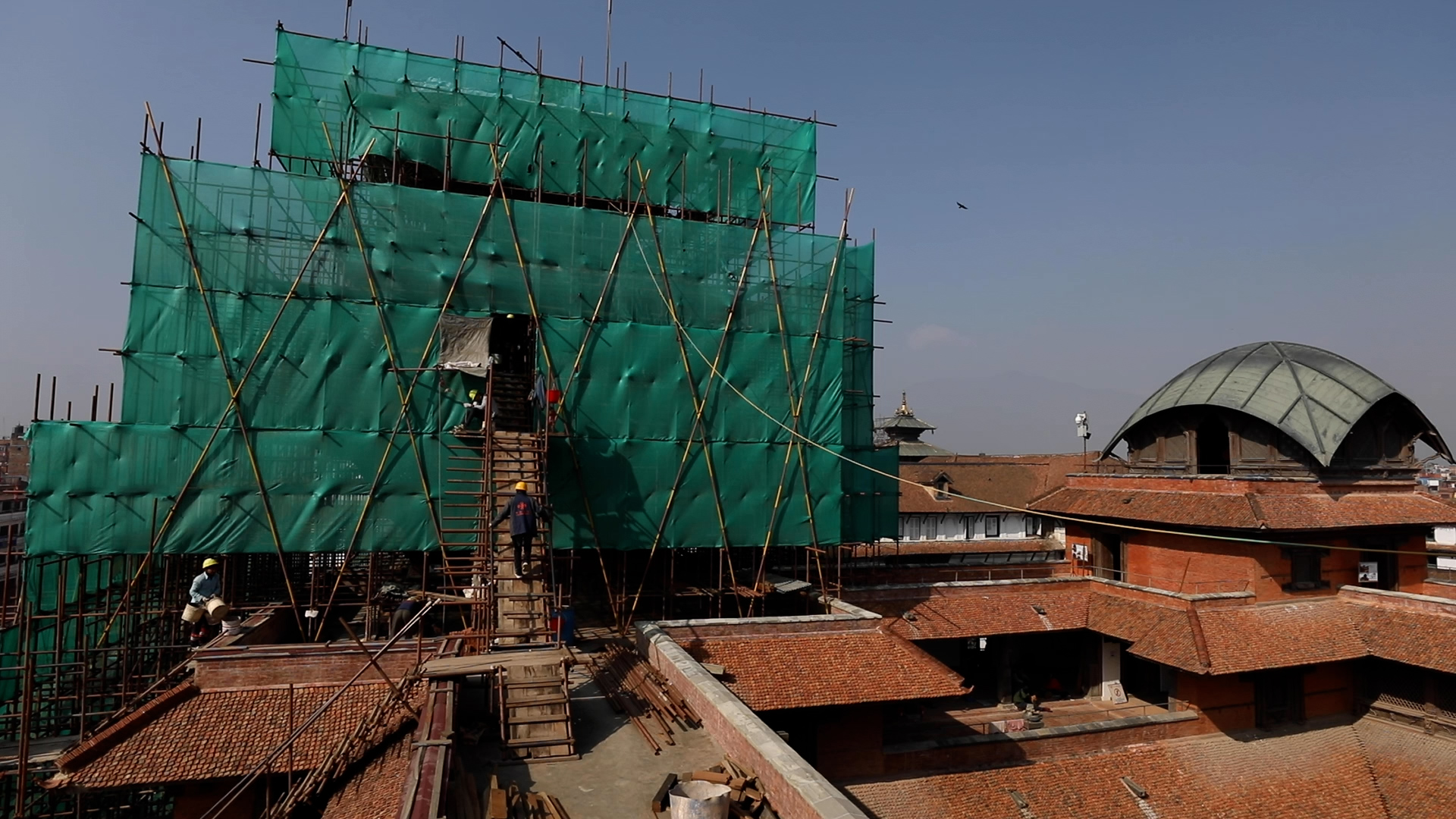
It's been almost a year since Guo Qianru, a 33-year-old Chinese conservation engineer, was last in Nepal. When she boarded a plane back to China early in January, she imagined she'd be back in Kathmandu soon after the Spring Festival holiday. But then the COVID-19 outbreak struck, and she was unable to return to the place where she'd spent more than 200 days a year for the past two years.
Since August 2017, Guo and six colleagues from the Chinese Academy of Cultural Heritage (CACH) had been working with a team of Nepalese artisans to restore the nine-story Basantapur complex in Kathmandu, a UNESCO World Heritage Site that was badly damaged during the 2015 earthquake.
However, the coronavirus pandemic brought Nepal's post-earthquake reconstruction to a sudden and grinding halt. Restoration work at the Basantapur complex was suspended in late March when Nepal went into national lockdown.
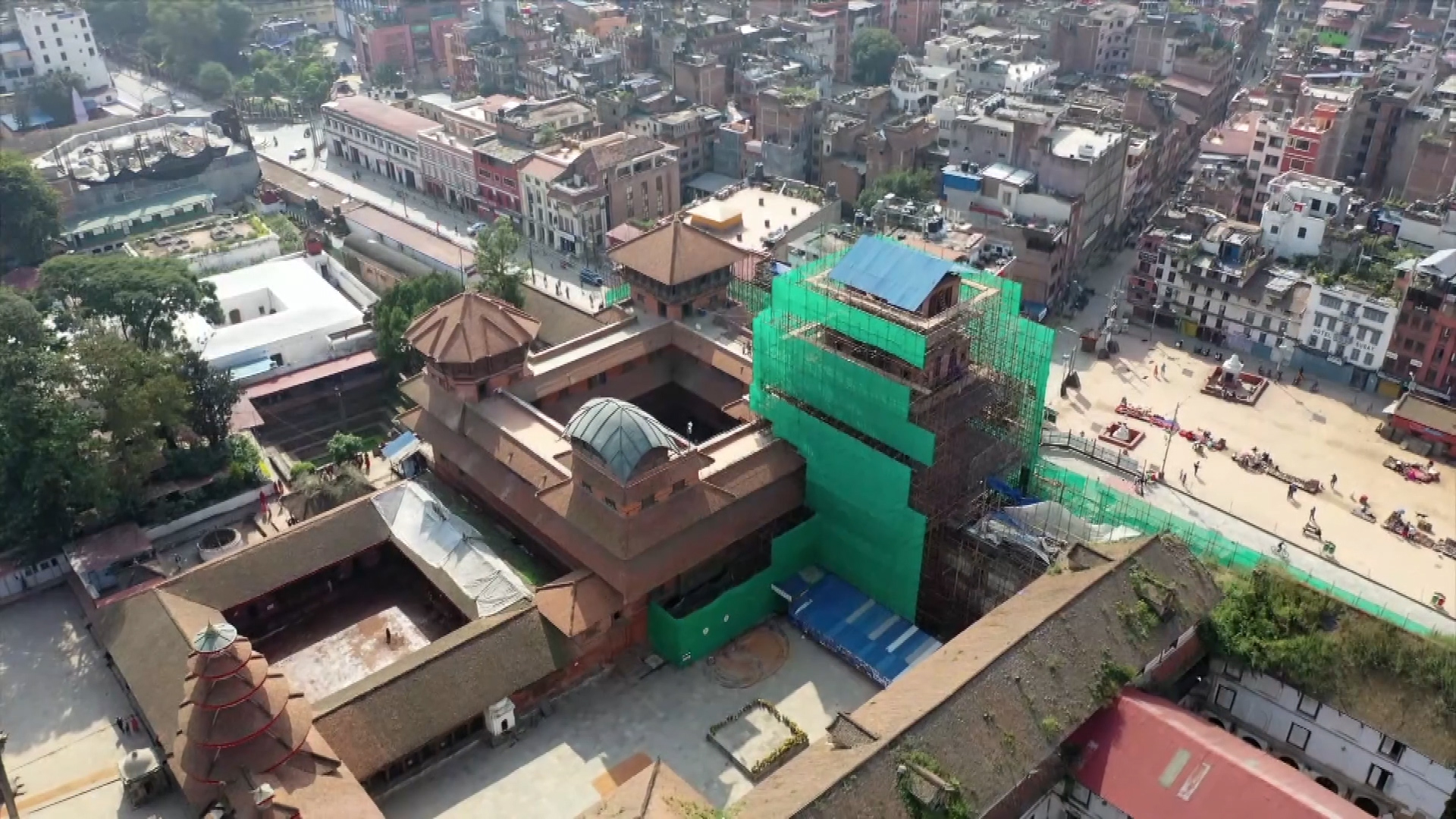
The nine-story Basantapur complex under restoration in October 2019. /Courtesy of China Central Television
The nine-story Basantapur complex under restoration in October 2019. /Courtesy of China Central Television
In April 2015, a 7.8-magnitude earthquake hit the Kathmandu Valley, causing widespread death and destruction and reducing numerous priceless historical buildings to rubble.
The Kathmandu Valley, comprising seven Protected Monument Zones, was recognized as a UNESCO World Heritage Site in 1979 for its outstanding architecture and unique coexistence of different religions.
The nine-story Basantapur complex stands at the entrance to Kathmandu Durbar Square. It was built in the late 18th century by Prithvi Narayan Shah, the first king of the Shah Dynasty, who unified Nepal. The complex represents a unique combination of the centuries-old Newari architecture and a foreign influence from the Muslim Mughals.

International delegates visited the damaged nine-story Basantapur complex after the earthquake. /AP
International delegates visited the damaged nine-story Basantapur complex after the earthquake. /AP
The Basantapur complex suffered severe damage during the earthquake. The top three floors of the Basantapur Tower completely collapsed. The top level of the northeast tower was totally destroyed. Other parts of the structure also suffered damage and deformation. Numerous wooden struts and sculptures were dislodged and left scattered on the ground.
At the request of the Nepali government, China pledged 94 million yuan (roughly $14 million) to help restore the Basantapur complex. The project was expected to last five years, from 2017 to 2022.
In the two years before work got underway, the complex had suffered further damage. It had gone through two monsoons since the earthquake. "After two years left unattended, three monkeys were living inside, and fleas were all over the place. It was a complete ruin," explained Guo.
In the early days, there was some friction between the Chinese and Nepali experts regarding how the structure should be restored. The Chinese supported a policy of minimum intervention, while the Nepalese wanted to completely rebuild the structure since, for them, renewal means progress. With time, the Chinese view prevailed.
"They gradually accepted our concept because they see that we're genuinely working hard to preserve their cultural heritage," said Guo. Ultimately, a middle-way approach was agreed – keeping any parts that were still reusable and making replacements for any that were lost or beyond repair.
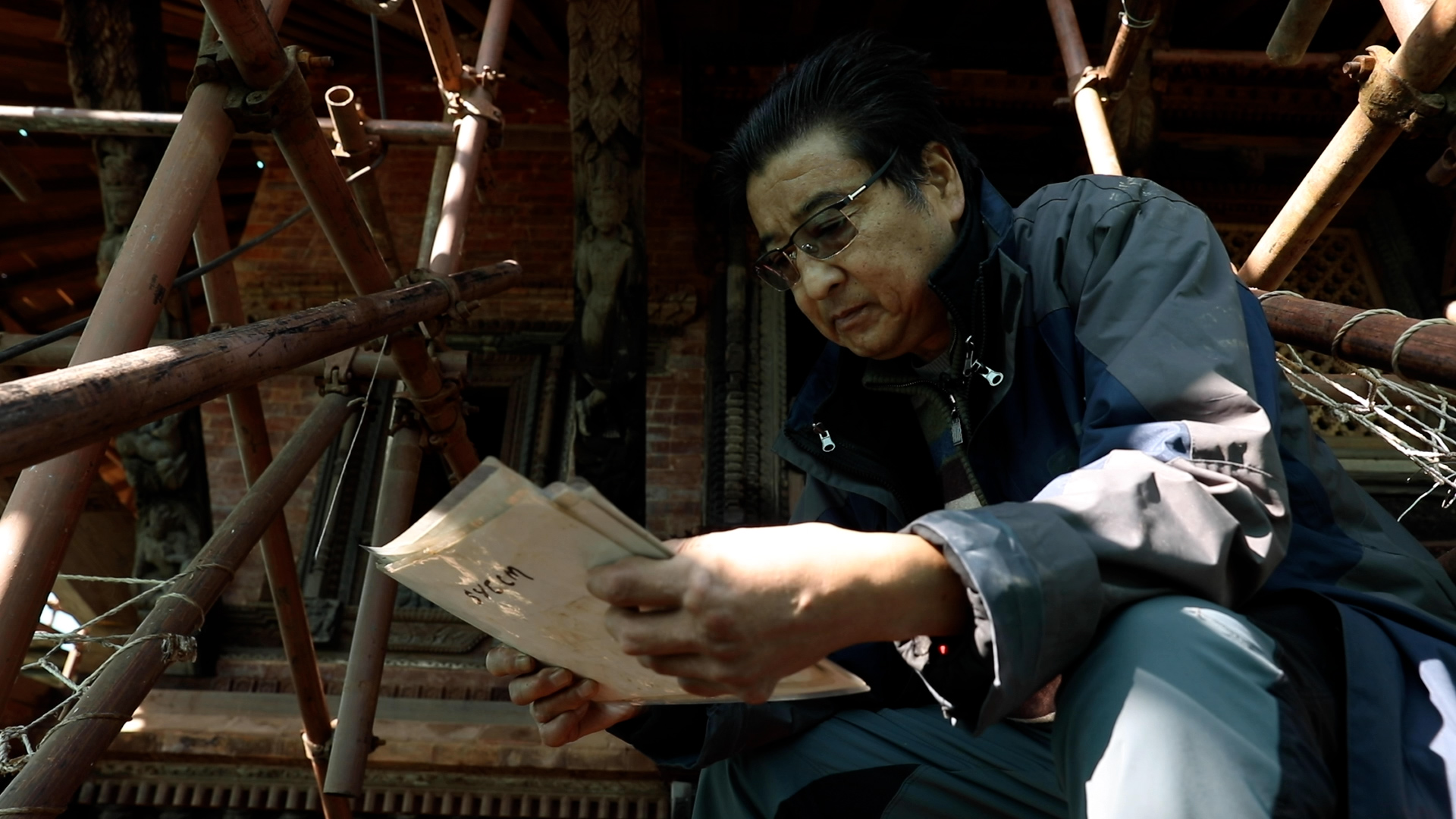
Zhou Jianguo uses old photos as a reference for the restoration work. /Yan Jingwei, CGTN
Zhou Jianguo uses old photos as a reference for the restoration work. /Yan Jingwei, CGTN
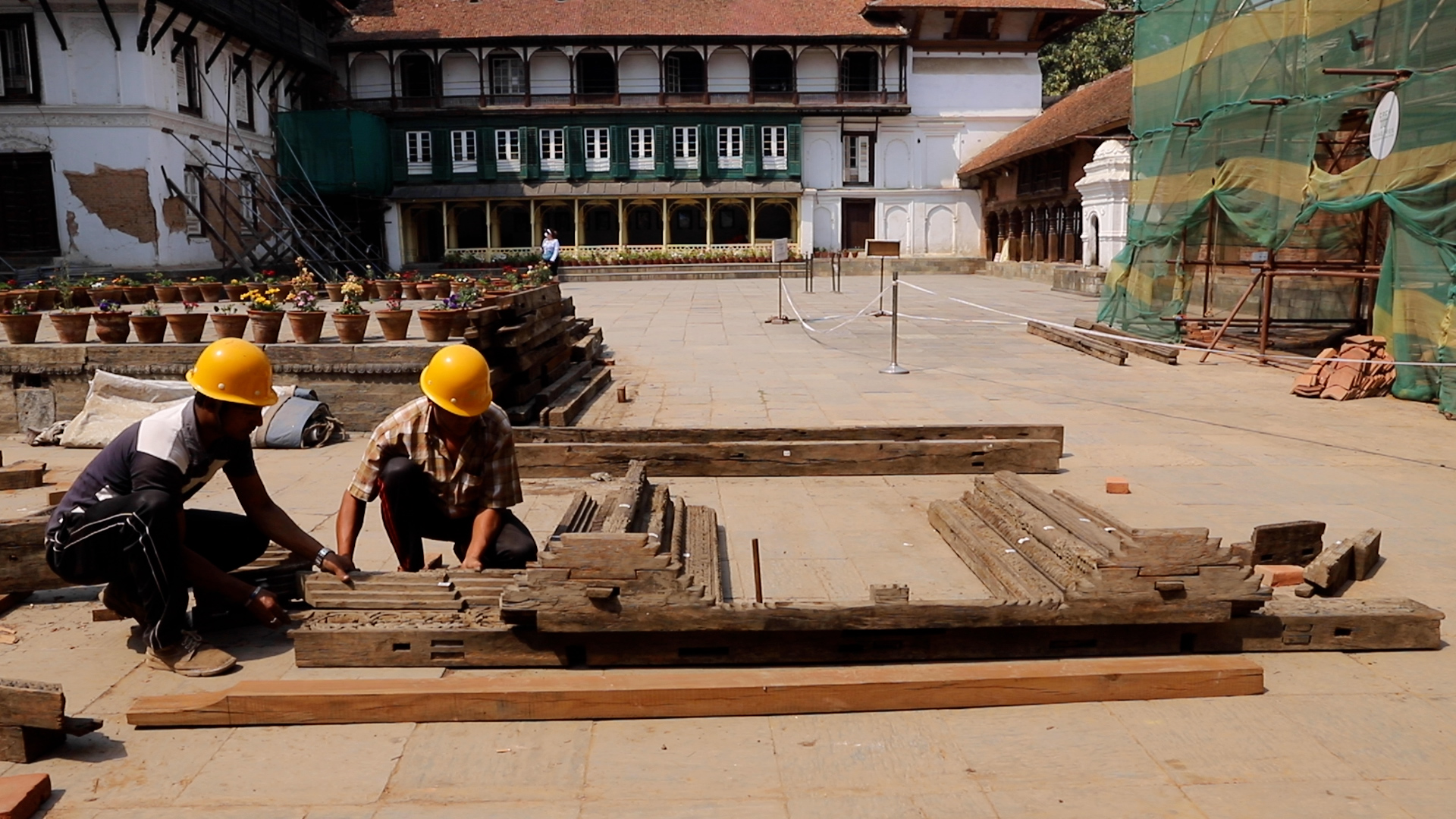
Workers assemble dislodged wooden pieces. /Courtesy of the Chinese Academy of Cultural Heritage
Workers assemble dislodged wooden pieces. /Courtesy of the Chinese Academy of Cultural Heritage
Another challenge facing the Chinese team initially was a lack of detailed references, which were crucial if they were to reassemble the structure and its various parts precisely as they had been. They sought out local photographers, asking them for any old photos they might have of the complex, and consulted local conservation experts to see if they had any unpublished reference materials.
"In traditional Nepali architecture, all the wooden pieces are hand-made," said Zhou Jianguo, who, as someone with considerable experience of restoring famous temples in Tibet, is the site supervisor for the Basantapur restoration. "We spent a year, numbering all the fallen parts we could retrieve and trying to assemble them piece by piece to get the jigsaw right."
"We're also thinking about digitalizing the reference materials we've got," said Guo. "And then transferring them to Nepal's Department of Archaeology for future protection efforts."
The Basantapur complex was the royal palace of Hindu kings. It's famous for its delicate wood carvings, which often depict legends associated with Hinduism.
The 2015 earthquake brought down many of the complex's wooden components. Craftsmen with the skills needed to restore them were few and far between. So, the Chinese team scouted the nearby city of Bhaktapur, renowned for its woodcarvers.
"We rely on the local carvers to repair the wood carvings," said Guo. "The wood-carving skills are passed down from generation to generation within their families. The local carvers just know where and how to carve their gods."
Sanukaji Shakya has been a woodcarver for 20 years. He joined the Basantapur restoration work in May 2018, repairing broken wooden struts and other components. While carving, he pays particular attention to the different facial expressions of the gods. He tries to establish a resonance with his subjects in order to make his work more real. "We work in our traditional way," said Shakya. "I'm very happy that the Chinese respect our opinions."
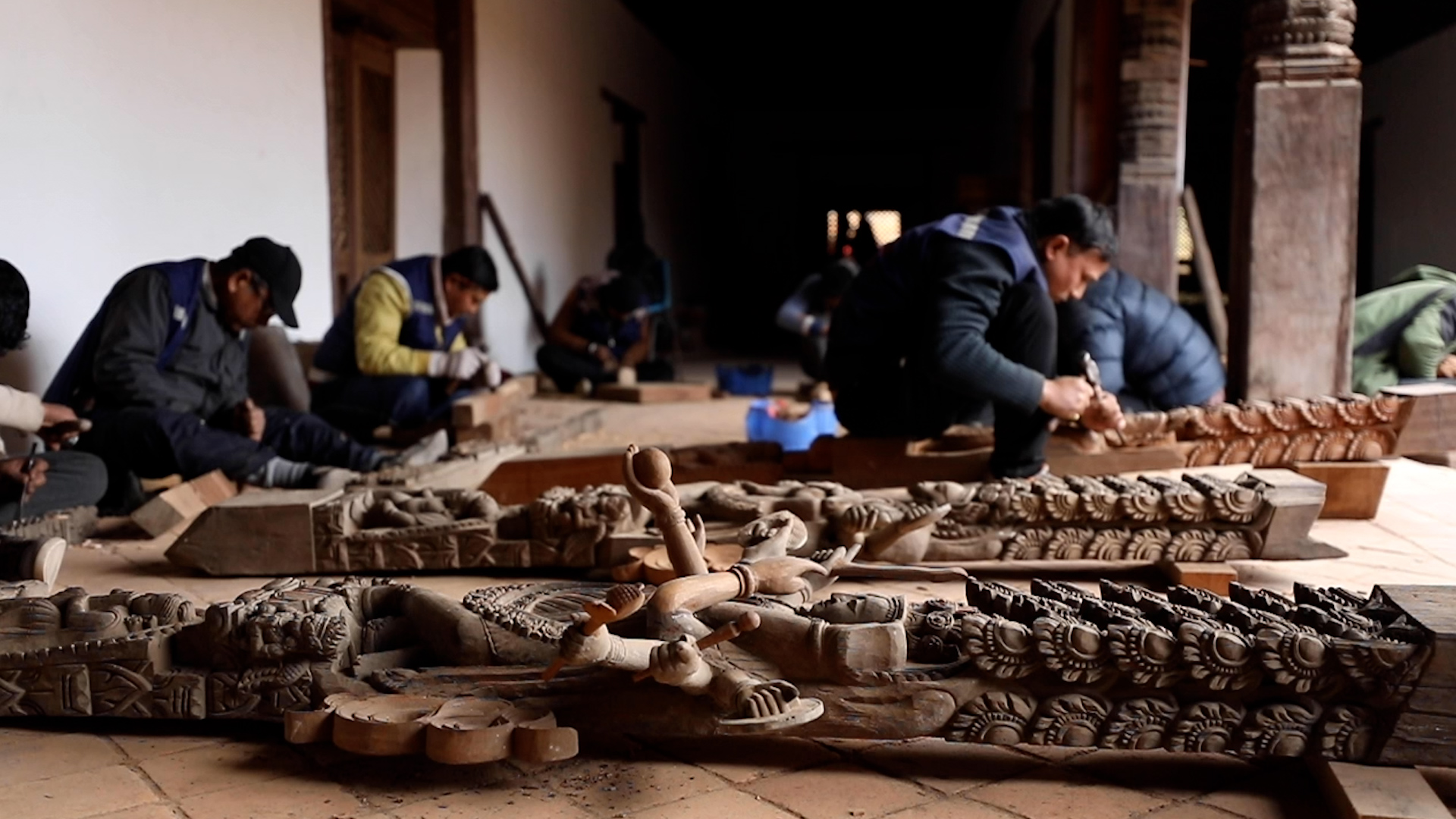
It can take a month to repair a single wooden strut. /Li Liang, CGTN
It can take a month to repair a single wooden strut. /Li Liang, CGTN
"They're living heritage," said Rohit Ranjitkar, country director of the Kathmandu Valley Preservation Trust (KVPT), the valley's only remaining international NGO working to safeguard Nepal's architectural heritage. "These people are vital for restoration."
KVPT has been working in heritage restoration in Nepal since 1991. It began work on the damaged structures in Patan Durbar Square immediately after the 2015 earthquake. It also provided valuable documents and advice to the Chinese team working in Kathmandu Durbar Square.
Restoring the old buildings damaged in the 2015 earthquake has been a long, slow process in Nepal. It's estimated that 90 percent of the country's architectural heritage was impacted. With limited funding and manpower, Nepal's Department of Archaeology was in desperate need of help.
"Certainly, we need support from international donors," said Damodar Gautam, director of Nepal's Department of Archaeology. "It's estimated that $159 million will be needed to rehabilitate all the monuments affected by the earthquake."
"I think any assistance is good," said Ranjitkar, commenting on foreign money used to restore Nepal's heritage. "Because the goal is to save the heritage."
According to Nepal's Department of Archaeology, as of December 2019, four and a half years after the earthquake, 40 percent of the damaged monuments had been restored.
The restoration work at the Basantapur complex continued into late March. But when Nepal went into national lockdown, all the workers were temporarily laid off.
Just before the lockdown, the three golden pinnacles were re-erected on top of the nine-story Basantapur Tower. This signaled that the restoration work was nearing completion.
One Chinese expert has remained in Kathmandu to conduct regular safety checks at the site. The rest of the team are staying in Beijing, waiting to return to the city of temples to wrap up the restoration work once Nepal brings the pandemic under control. Although it's uncertain when that will be, they remain hopeful that the project can be completed on schedule in 2022.
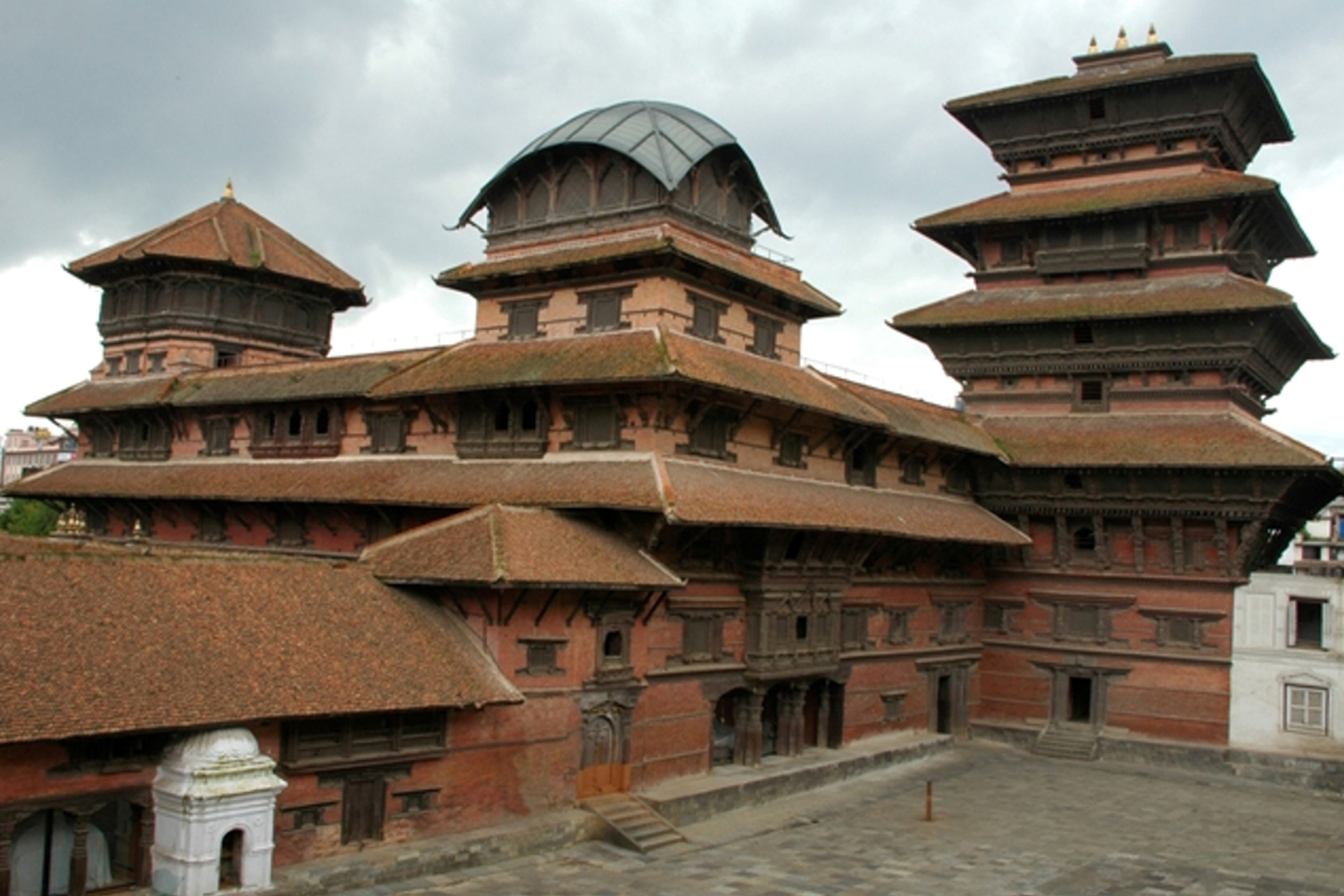
The nine-story Basantapur complex before the 2015 earthquake. /Courtesy of the Chinese Academy of Cultural Heritage
The nine-story Basantapur complex before the 2015 earthquake. /Courtesy of the Chinese Academy of Cultural Heritage
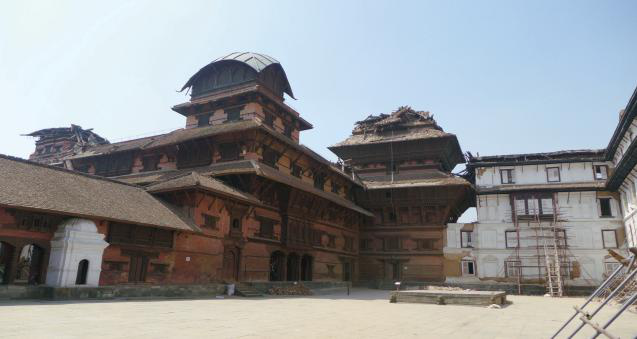
The nine-story Basantapur complex after the 2015 earthquake. /Courtesy of the Chinese Academy of Cultural Heritage
The nine-story Basantapur complex after the 2015 earthquake. /Courtesy of the Chinese Academy of Cultural Heritage
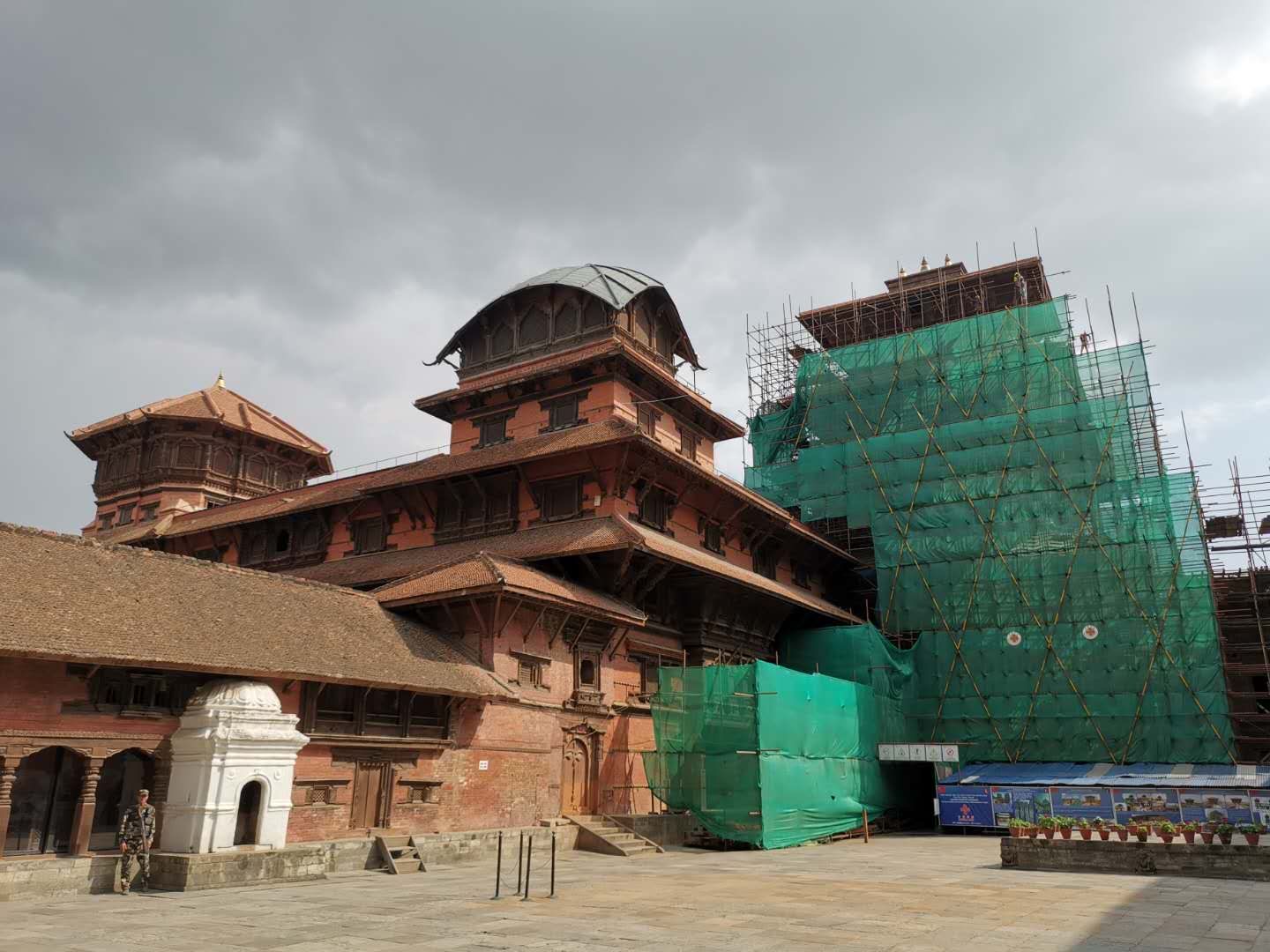
The nine-story Basantapur complex as of August 2020. /Courtesy of the Chinese Academy of Cultural Heritage
The nine-story Basantapur complex as of August 2020. /Courtesy of the Chinese Academy of Cultural Heritage

